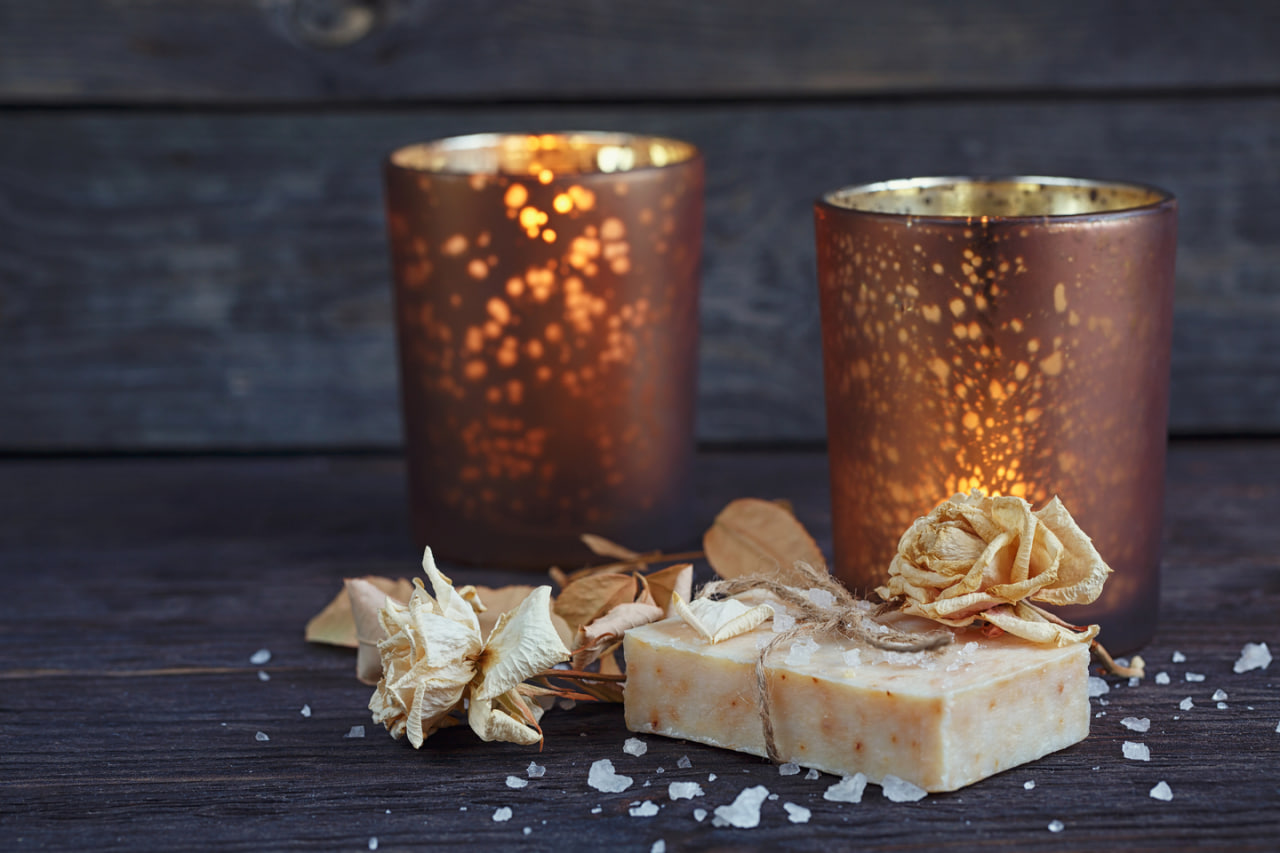
Proper Candle Maintenance
Caring for candles properly ensures a longer burn time, consistent scent release, and a safer experience. One of the most important practices is trimming the wick before each use. A wick that is too long can produce a large flame, create excess smoke, and burn the candle unevenly. Keeping the wick trimmed to about 1/4 inch promotes a controlled flame and even wax consumption.
Positioning candles on heat-resistant, flat surfaces away from drafts, flammable materials, and children or pets is essential. Drafts can cause flickering, tunneling, and uneven melting, while proximity to flammable objects increases the risk of accidents. Rotating the candle occasionally ensures that wax melts evenly across the surface, preventing one-sided burning and prolonging the life of the candle.
Understanding Burn Behavior
Observing how a candle burns provides insight into its quality and helps prevent common issues. If the wax pool does not reach the edges during the first burn, it can lead to tunneling, where the center burns faster than the sides. Allowing the candle to burn long enough during its initial use to form a full melt pool is crucial. This practice sets the candle for consistent performance in subsequent uses.
Some candles may produce soot or smoke if the wick is improperly sized or the wax contains impurities. Choosing high-quality wax and fragrances reduces this problem, as does maintaining correct wick length. Avoid moving a burning candle or exposing it to strong air currents, as this can disrupt the flame and increase smoke output.
Safety Precautions
Safety is a key consideration in both using and creating candles. Never leave a burning candle unattended, and always extinguish it before leaving the room or going to sleep. Using a snuffer or gently blowing out the candle prevents wax splatter and reduces smoke. Keeping matches, lighters, and other ignition sources away from children and pets minimizes accidental fires.
Proper storage of candles when not in use is also important. Store them in a cool, dry place, away from direct sunlight, heat sources, and extreme temperature changes. This prevents melting, discoloration, and fragrance degradation. Labeling candles with burn instructions and safety warnings is beneficial, especially for homemade or gift candles, to ensure recipients understand proper use.
Creative Tips for Candle Making
Adding creativity to your candle projects makes them unique and enjoyable. Experimenting with color layering allows makers to produce visually striking designs. Gradually pouring different colored waxes in layers creates a gradient effect, while embedding decorative elements like dried flowers, herbs, or small charms adds texture and character.
Scent blending offers another avenue for creativity. Combining complementary fragrances can produce signature scents that enhance the ambiance of a space. Consider pairing floral, citrus, or herbal notes for balanced aromas that evoke specific moods or seasons. When blending scents, test small batches first to achieve the desired intensity and harmony.
Advanced Techniques for Personalization
Molded candles provide opportunities for artistic expression. Silicone molds of various shapes, such as geometric patterns, floral designs, or themed shapes, allow makers to create intricate candles with minimal effort. Carving or sculpting wax surfaces after pouring introduces additional detail and personalization.
Using decorative techniques like marbling, swirling, or ombré effects elevates candle design. These techniques require attention to temperature control and careful pouring, but the results are visually impressive. Incorporating layered fragrances in different sections of the candle can enhance the sensory experience and create multi-dimensional aroma profiles.
Enhancing Candle Longevity and Scent Throw
Maximizing burn time and scent diffusion involves both preparation and usage techniques. Ensuring that the wick is properly centered and straight before the wax sets prevents uneven burning. Using quality fragrance oils within recommended fragrance load limits ensures consistent aroma release without compromising the candle structure.
During use, keeping the candle away from drafts and allowing it to burn long enough to create a full melt pool improves scent throw. Replacing wicks that become clogged with carbon buildup helps maintain optimal performance. Storing unused candles in airtight containers preserves fragrance intensity and prevents dust accumulation, keeping them fresh until they are ready to be enjoyed.
Combining Function and Aesthetic
Candle care, safety, and creativity work together to produce enjoyable and lasting products. By combining attention to detail, proper maintenance, and imaginative techniques, makers can create candles that are visually appealing, safe, and aromatic. Each candle becomes not just a source of light, but a personal expression of artistry, care, and craftsmanship that enhances any home or gift-giving experience.
